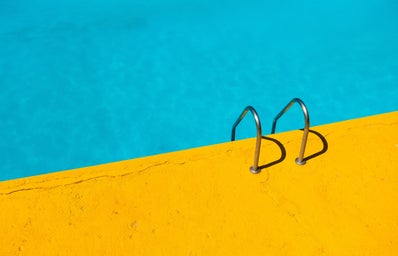The hijab, the most commonly used term across cultures, is a scarf that usually covers the hair and neck.
“For Muslim women, wearing a veil or head covering acts as a show of obedience to the Qur’an and to Allah, as well as being a symbol of modesty and womanhood,” said imb.org.
It ties directly to the Muslim religion, but can also be expressive to a woman’s sense of fashion, identity and faith. Yet, one of the most common misconceptions about Muslim women in 2018 is their relationship with the hijab.
Tasneem Abushaban, a close friend and co-worker, dissected these misconceptions and told me a little bit about her story to me as a young Palestinian woman. Growing up in Phillipsburg, NJ—a very non-diverse community—Tasneem experienced discrimination towards her culture from a young age.
During her early years of middle school, Tasneem was known as the pretty girl with long dark hair. At the start of seventh grade, this changed. Depending on the culture, some women begin wearing the hijab at the start of puberty, as a rite of passage, or when they get married.
At the time Tasneem made this choice, she was seen as a respected woman in her family and culture, but was treated as an outcast by her peers.
“I remember the first day of school when I walked in with my hijab,” said Tasneem. “ So many people would ask me, ‘Why are you wearing that? Are you ever going to take that off?’”
She realized that the ignorance she received in those years were because of a lack of education. Her peers were young and simply didn’t understand the somewhat complex yet beautiful tradition of the hijab. For Tasneem, wearing it shows her the authenticity of human intention.
“When I wear the hijab I feel like I see who people really are,” Tasneem said.
One of the major misconceptions about Muslim women are that they are oppressed by wearing the hijab. However, Tasneem feels that wearing the hijab allows her personality and intellect to be noticed in addition to her beauty.
With growing inclusivity across the beauty industry over past years, the commercialization of Muslim women has become a popular market. Nike, made their Pro Hijab with famous Muslim athletes Zeina Nassar a boxer, Zahra Lari, a figure skater and Ibtihaj Muhammad, a fencer as the faces. The product was intended to create a lightweight, breathable hijab for women athletes.
Other companies like Dolce & Gabbana feature hijabs and abayas for a more luxurious purpose. This collection included fashion forward pieces paired with designer handbags. Giving women in the Middle East the accessibility to have fun with their culture is a necessary market that designers need to consider executing much more.
Although, having the creative freedom to pick different style hijabs does not describe a Muslim woman’s experience to the least. Many people are accepting to different cultures as we grow into a more progressive society, yet discrimination is still extremely prevalent.
“I run into situations all the time where I feel like I am being belittled, talked down to, or being mistreated just because I am wearing the hijab,” explained Tasneem.
Tasneem expressed that she had even seen a difference between the way she had been treated in comparison to the Muslim male figures in her life. Therefore, this ensures a very fearful environment for women to deal with as they experience discrimination on college campuses, in their careers, and even just going to a supermarket. Many women face ridicule when wearing their hijabs in public places and are treated differently just because of this symbol of their religion.
Some feel that this discrimination is tied directly to religion – yet Alyssa E. Rippy & Elana Newman explain in their Women’s Rights Project,
“… Muslim women who wear headscarves are more likely than those who do not to face discrimination: 69% of women who wore hijab reported at least one incident of discrimination compared to 29% of women who did not wear hijab.”
Despite all of this heinous inequality, the most prominent generalization made about Muslim women is their reasoning behind choosing to wear a head covering. The hijab, veil or abaya has a personal story to each woman who wears one.
Whether a woman chooses to wear the hijab later in their life or at the very mark of their womanhood, one thing should always be remembered. Do not pry. Do not make a woman tell their story if they do not feel comfortable or willing to do so. The Muslim religion and cultures that surround it are so intriguing but are not anyone else’s to claim. Respect is so crucial.



